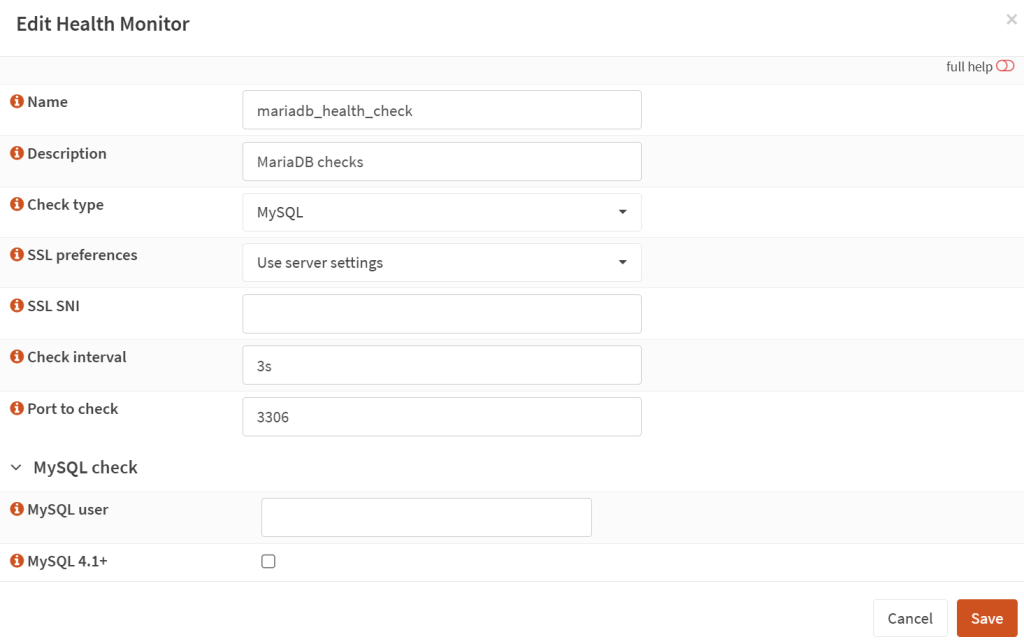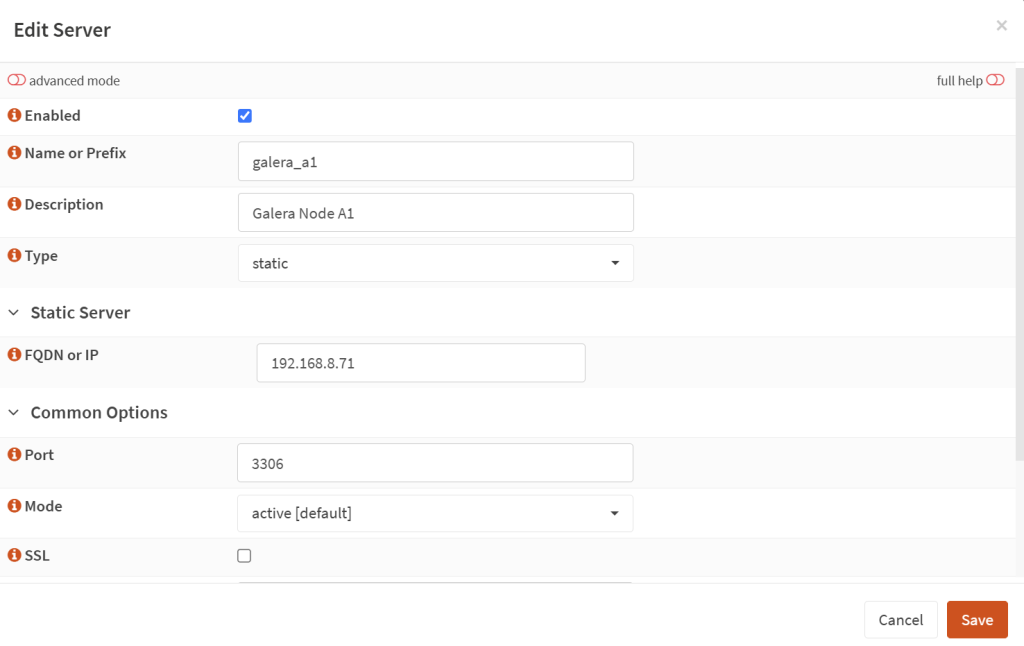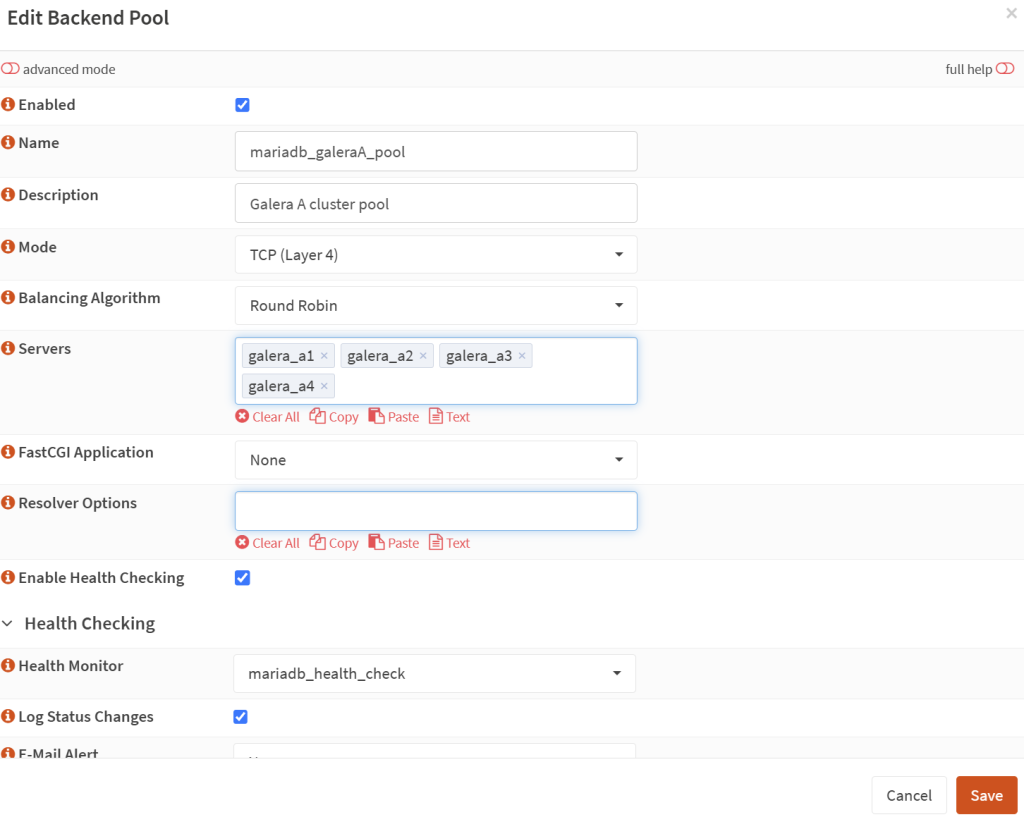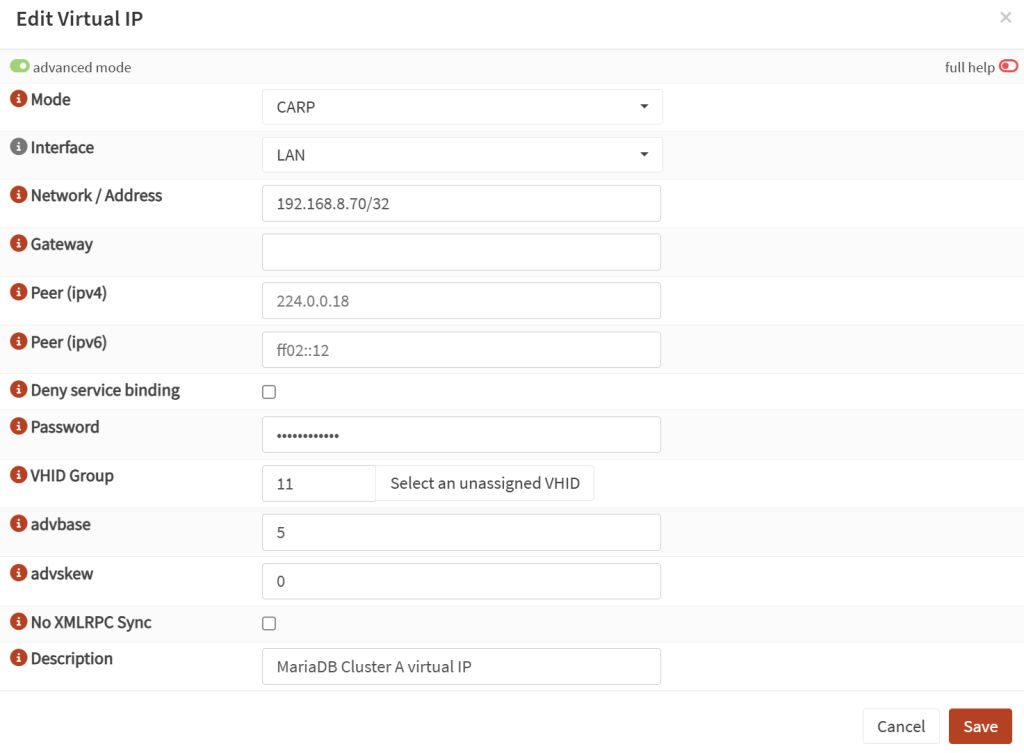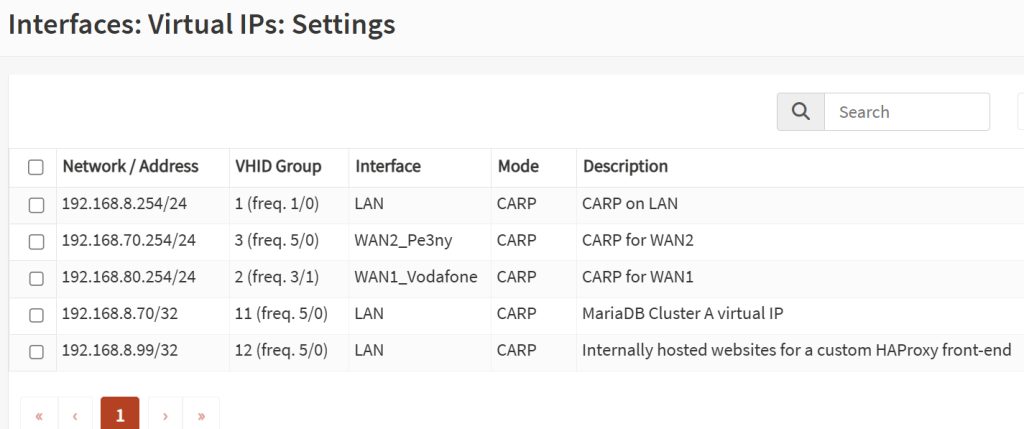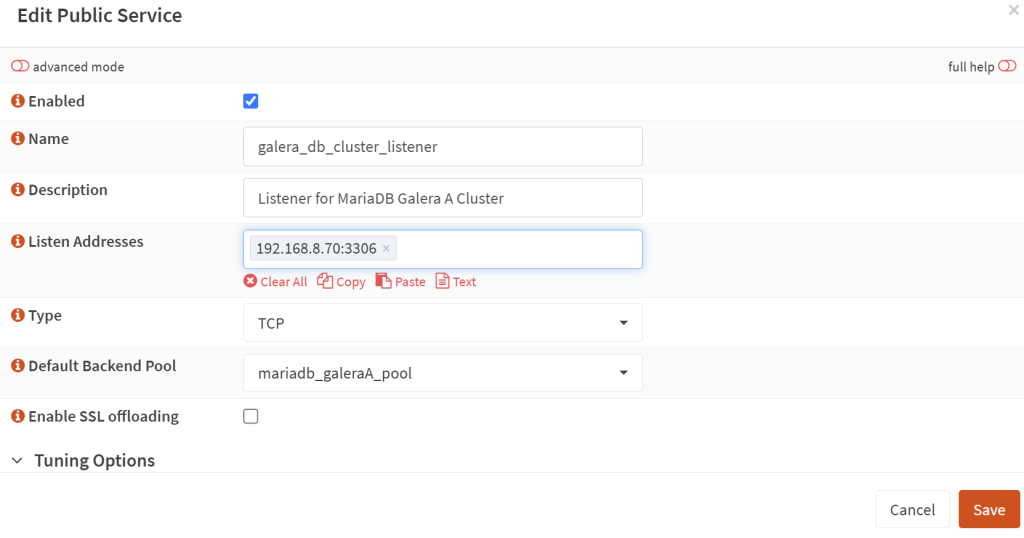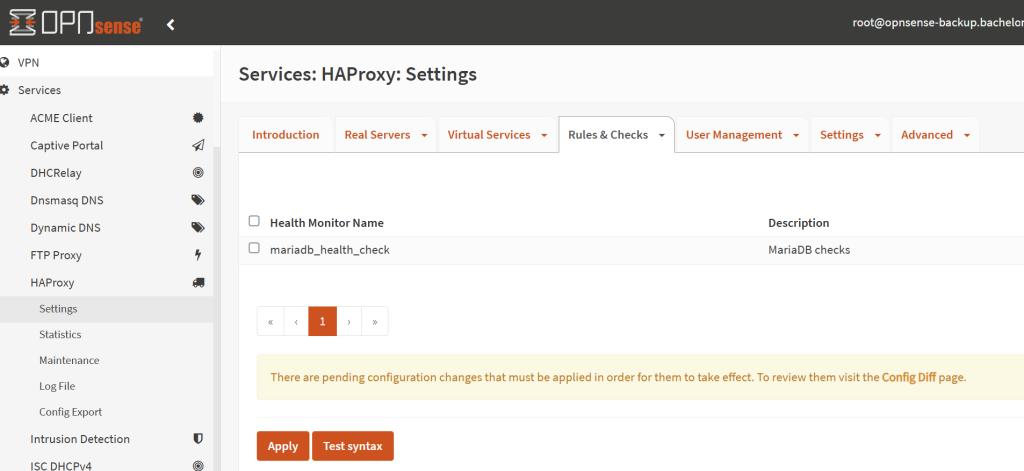- In this scenario, we are setting up HAPRoxy on OPNSense, where it is available as a plugin. If you have a different reverse proxy or have HAProxy deployed in a different way, you can try following the steps before, although it may differ.
Install / Enable HAProxy on OPNSense
- In case you do not yet have HAPRoxy installed/enabled on your OPNSense, go ahead to ‘System’ → ‘Firmware’ → ‘Plugins’ and download it.
- Log into OPNSense and go to ‘Services’ → ‘HAProxy’ → ‘Settings’. Then again to ‘Settings’ → ‘Service’ to ensure that the service running.
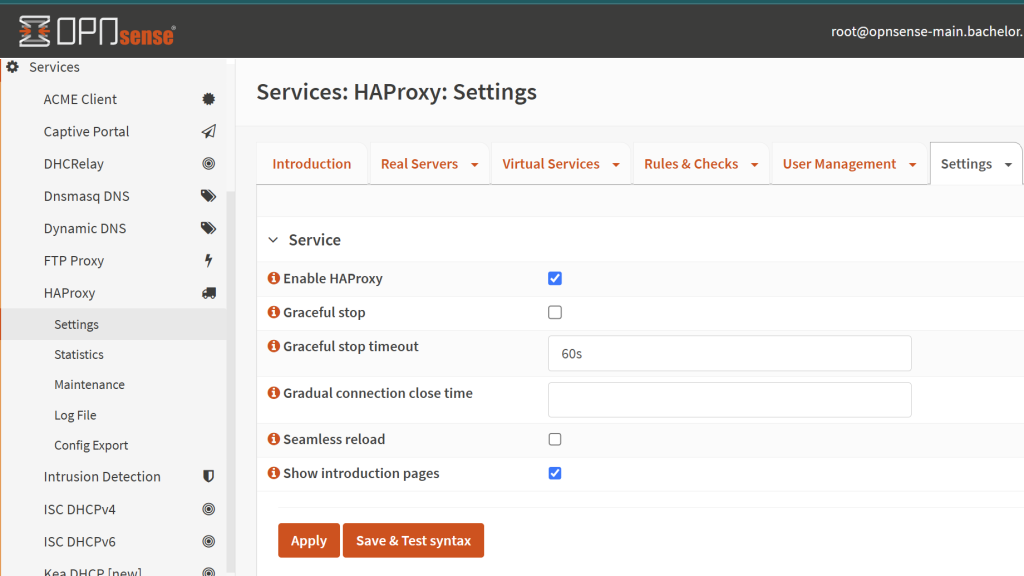
Health Check Monitor Set Up on HAProxy
- Create a health check for the MySQL service that MariaDB needs:
- In the top menu, go to ‘Rules & Checks’ → ‘Health Monitors’
- Click on the + sign to add a new one (this button is a bit less visible).
- Name/Description: as you like, such as mariadb_health_check
- Check type: MySQL
- Check internal 3s (or as you prefer)
- Port: 3306
Real Server Set Up on HAPRoxy
- Now let’s make HAProxy aware of each container’s existence. While still in ‘Services’ → ‘HAProxy’ → ‘Settings’ in the left menu, go to ‘Real servers’ → ‘Real servers’ drop-down option. Click on on the + sign to add a new one for each instance.
- Name: name of each galera instance, such as galera_a1
- Type: static
- IP: the real IP of each instance
- Port: 3306 (optional, since our health check has it configured already)
- Mode: active
- In the end, you should have all four listed:
Back-end Pool Set Up on HAProxy
- The next step is to create a backend pool. Go to ‘Virtual Services’ → ‘Backends’ and click on the + sign again.
- At this point, it would be good after saving this change to click on the ‘Test syntax’ button to ensure that there are no errors and then you can click on the ‘Apply’ button.
Virtual IP Set Up on OPNSense
- So now HAProxy knows what to check and where and how often. Yet, for our web apps, we would want a single point of contact. We will need a virtual IP address.
- In the left menu of your OPNSense, go to ‘Interfaces’ → ‘Virtual IPs’ → ‘Settings’ and click on the + sign to add a new one.
- Mode: CARP (as we have OPNSense in a HA cluster already and want them to take over in case one fails)
- Interface: LAN
- Network address: Choose an address on your LAN that is not on your DHCP range (mine starts from .101 onwards). The subnet should be specific to that IP only, i.e. /32.
- Set up a custom password – if you have more OPNSense units, it needs to match on all instances.
- VHID: needs to be unique from others and match with other OPNSense units in the cluster (if you have one).
- advbase: same as above
- advskew: The main unit should have a lower value, the secondary (backup) unit(s) higher value(s).
- Check out my previous article on how CARP and HA works on OPNSense for more details.
- You might object why to add another CARP interface when you already have your OPNSense in a cluster. This is the cleanest way of separating between our network’s gateway IP and our database service IP. If we ever need to add firewall or NAT rules in the future, we can simply refer to this virtual IP.
- This is how it looks on my end after configuring the virtual IP for the Galera DB service (do not worry about the others if you do not have them):
Front-end (Public) Service Set Up on HAProxy
- Finally, we can head back to HAProxy via ‘Services’ → ‘HAProxy’ → ‘Settings’ and find the the ‘Virtual Services’ in the top menu and select ‘Public Services’ from the drop-down. Click on the + sign.
- Name/Description: As per your preference, something like ‘galera_db_cluster_listener’ may do.
- Listen address: your virtual IP
- Type: TCP (not HTTP!)
- Default back-end pool: our previously configured pool, e.g. ‘mariadb_galeraA_pool’.
Configuration Sync (For OPNSense Backup Nodes)
- After saving it, testing the syntax and applying, it would be good to ensure that this new config gets replicated to the other OPNSense instance in HA, if you have any.
- Head to ‘System’ → ‘High Availability’ → ‘Status’.
- Click on the button to the right of ‘Synchronize config to backup’.
- Then it would be good to log into your backup instance(s) to confirm that all the HAProxy and virtual IP config is in there. Esp. in HAProxy, it is often necessary to apply the new configuration:
- This concludes are load balancer part and we can finally look into testing our cluster.

